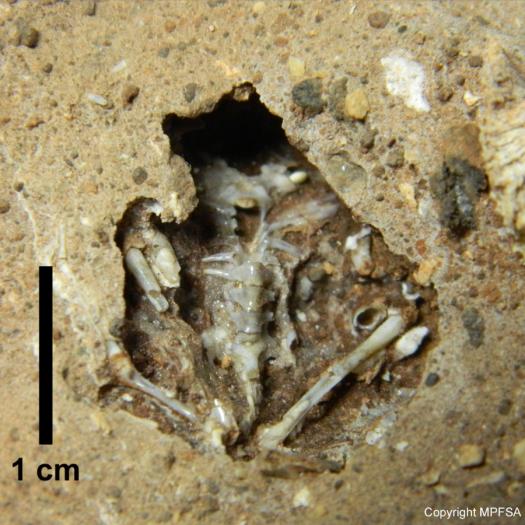Unveiling the First Neobatrachian (Anura) Discovered in the paleokarst system of Bolt’s Farm (Plio-Pleistocene; Cradle of Humankind), South Africa

MA 11-3

MA 11-3
A study from a South African-French team led by Alfred Lemierre & Dominique Gommery (CR2P-Paris), Nonhlanhla Vilakazi (University of Johannesburg) and Lazarus Kgasi (Ditsong : National Museum of Natural History), partially lift the veil on anurans from the Pleistocene of Northern South Africa.
Today, South Africa is home to more than 150 anuran species, assigned to more than ten families, present across the country. However, fossil record of anurans is very poor, most of it concentrated in the Pliocene of the Southern part of the country. Thus, anurans are almost absent from the Neogene and Quaternary of the Northern part of South Africa, even though numerous fossiliferous localities are identified. A study from a South African-French team led by Alfred Lemierre & Dominique Gommery (CR2P-Paris), Nonhlanhla Vilakazi (University of Johannesburg) and Lazarus Kgasi (Ditsong : National Museum of Natural History), partially lift the veil on anurans from the Pleistocene of Northern South Africa.
This study is centered on the analysis and description of MA 11-3, a specimen discovered in 2011 within the Pleistocene site of Milo A, included within the paleokarst system of Bolt’s Farm (Plio-Pleistocene) in the Cradle of Humankind. The study of this specimen, using tomography and 3D reconstruction revealed the presence of incomplete and articulated anuran skeleton with the shape of its body, within a cavity. Although very incomplete, the skeleton bears numerous synapomorphies of the Ranoidea, a large group of anurans with 10 families and 25 genera in South Africa. Albeit a certain taxonomical assignment is not possible, comparisons with all known South-African genera highlighted numerous osteological similarities with genera of the Pyxicephalidae, one of the most diverse family of the region. In addition, the shape of the body suggests that MA 11-3 died while hibernating, a biological capacity known in several pyxicephalid. The presence of a probable hibernating pyxicephalid, and the rich and diverse mammal fauna of Milo A, suggest the Pleistocene environment of Bolt’s Farm was an open savannah, with marked seasonality.
Référence : Lemierre, A., Vilakazi, N., Gommery, D., & Kgasi, L. (2024). Unveiling the First Neobatrachian (Anura) Discovered in the paleokarst system of Bolt’s Farm (Plio-Pleistocene; Cradle of Humankind), South Africa. African Journal of Herpetology, 1–19. https://doi.org/10.1080/21564574.2024.2351821